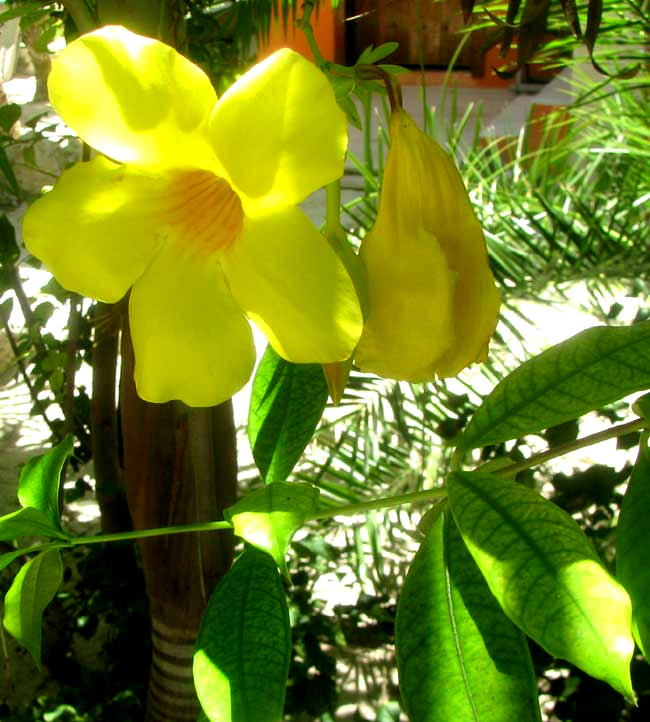Excerpts from Jim Conrad's
Naturalist Newsletter

from the September 11, 2011 Newsletter issued from Mayan Beach Garden Inn 20 kms north of Mahahual; Caribbean coastal beach and mangroves, ~N18.89°, ~W87.64°, Quintana Roo state, MÉXICO
GOLDEN TRUMPET VINE
The Golden Trumpet vine, ALLAMANDA CATHARTICA, is flowering. Its 4-inch long, 10cm, yellow flowers with slender reddish throat veins are shown above.
Notice that Golden Trumpet normally bears three or four leaves per stem node. There's another yellow-flowered vine, Pentalinon luteum, often grown in Mexico and confused with Golden Trumpet, but you can determine species you have by looking down the Golden Trumpet flower's throat. There you see what's shown below:

The yellow corolla wall with red lines radiating from the center is the same as with Pentalinon luteum, but that species' curly anther appendages are missing. A longitudinal section of a Golden Trumpet Vine blossom's mouth is shown below:

There you can see how the nearly stalkless, arrowhead-shaped anthers meet above the greenish, rounded stigma head forming a tepee. Also, stiff, white hairs point upwards above the stigma head, and downwards below the stigma. Pollinators pass through this well barricaded zone by passing between the hair tufts. The tufts are situated so as to oblige pollinators entering the flower to deposit pollen from other flowers onto this blossom's stigma head, but when leaving, to carry pollen from this flower's anthers to other flowers.
Golden Trumpet is native to Brazil but because of its prettiness is planted throughout the world's tropics. Several cultivars have been produced, some famed for their fragrances.
As with many members of the Dogbane Family to which Golden Trumpet belongs, the Apocynaceae, the plant's milky sap is poisonous. As suggested by the species name, Allamanda cathartica, all parts are cathartic. Cathartics purge the bowels.